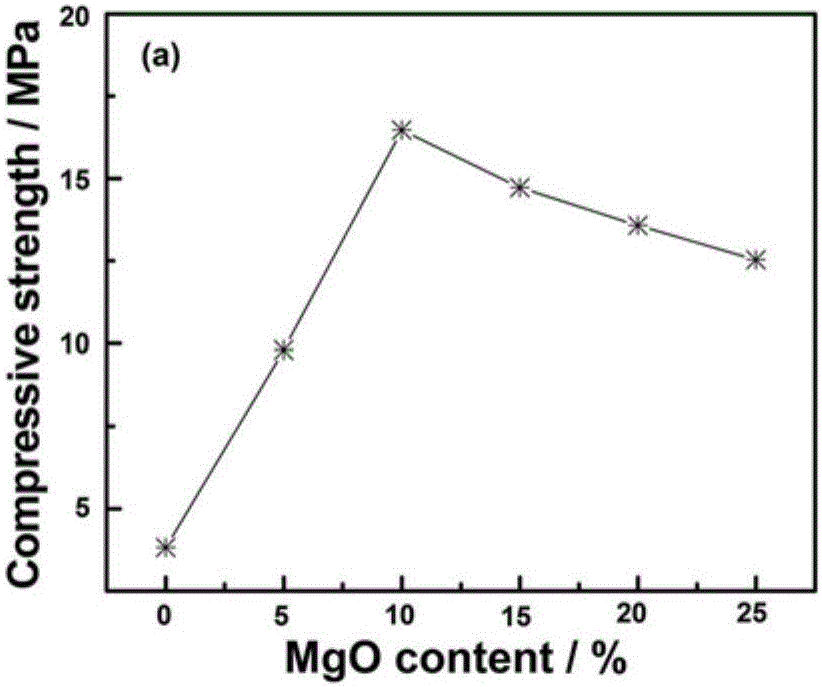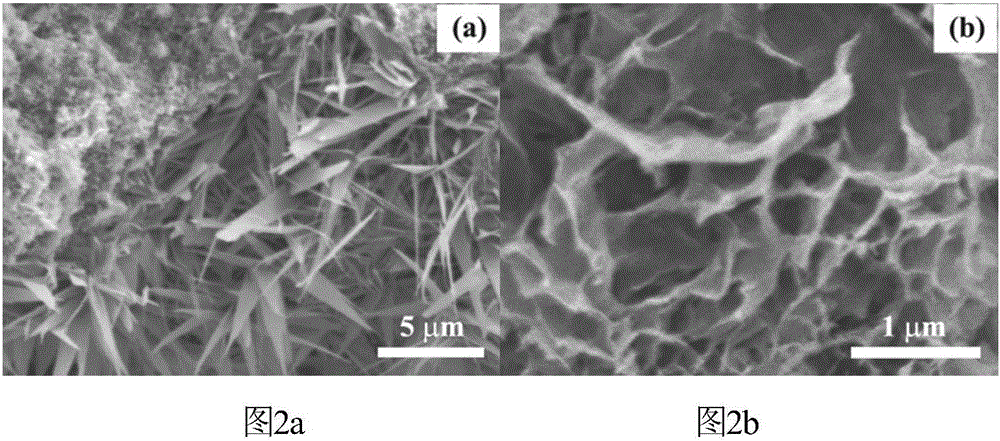Method for synthesizing silicate building material from magnesium oxide and blast furnace slag
A technology for synthesizing silicate and blast furnace slag, used in cement production and other directions, can solve the problems of limited activation of slag activity, low practical value, limited recycling rate, etc., to achieve high mechanical strength and durability, high mechanical strength, technically sound effect
- Summary
- Abstract
- Description
- Claims
- Application Information
AI Technical Summary
Problems solved by technology
Method used
Image
Examples
Embodiment 1
[0055] Magnesite tailings MgCO 3 The content is 95.0wt%. The ore is crushed and ground to a particle size of 150 μm or less. After roasting at 900°C for 0.5 hours, magnesium oxide is obtained. Mix magnesium oxide and slag evenly at a mass ratio of 1:9, and add an appropriate amount of mixing water (tap water) Mix well. Water consumption for mixing=(slag mass+magnesia mass)×10%+magnesia mass×50%. The mixture is sealed and stored away from light for 24 hours, then placed in a molding mold, and molded by 20MPa pressure. After molding, the sample was placed in a hydrothermal reaction kettle, heated to 200°C, kept at a constant temperature for 6 hours, and then cooled naturally. In the obtained silicate building material products, calcium silicate hydrate accounted for 69.2 wt%, and magnesium silicate hydrate accounted for 18.5% by weight. wt%. The average compressive strength of hydrothermally cured samples is 16.47MPa, such as Figure 1a ), the corresponding MgO dosage is 10w...
Embodiment 2
[0057] The difference from Example 1 is that the mass ratio of MgO and slag is adjusted to 1:3, the amount of mixing water = (slag mass + magnesium oxide mass) × 20% + magnesium oxide mass × 50%, and the hydrothermal reaction temperature, time Invariably, in the obtained silicate building material products, calcium silicate hydrate accounts for 52.4wt%, and magnesium silicate hydrate accounts for 40.0wt%, then the compressive strength of the cured body is reduced to 12.53MPa, such as Figure 1a ) shown.
Embodiment 3
[0059] The difference from Example 1 is that the mass ratio of MgO and slag is adjusted to 1:19, the amount of mixing water = (slag mass + magnesium oxide mass) × 5% + magnesium oxide mass × 50%, the molding pressure is 10MPa, and the hydrothermal Reaction temperature, time are constant, in the obtained silicate building material product, calcium silicate hydrate accounts for 74.3wt%, magnesium silicate hydrate 10.1wt%, then the compressive strength of cured body reduces to 9.81MPa, as Figure 1a ) shown.
PUM
| Property | Measurement | Unit |
|---|---|---|
| compressive strength | aaaaa | aaaaa |
| compressive strength | aaaaa | aaaaa |
| compressive strength | aaaaa | aaaaa |
Abstract
Description
Claims
Application Information
 Login to View More
Login to View More - R&D
- Intellectual Property
- Life Sciences
- Materials
- Tech Scout
- Unparalleled Data Quality
- Higher Quality Content
- 60% Fewer Hallucinations
Browse by: Latest US Patents, China's latest patents, Technical Efficacy Thesaurus, Application Domain, Technology Topic, Popular Technical Reports.
© 2025 PatSnap. All rights reserved.Legal|Privacy policy|Modern Slavery Act Transparency Statement|Sitemap|About US| Contact US: help@patsnap.com



